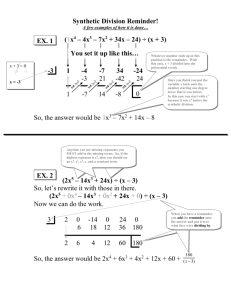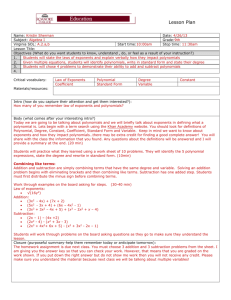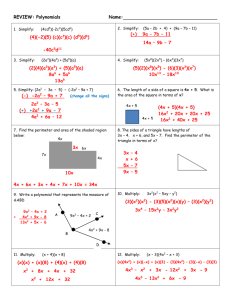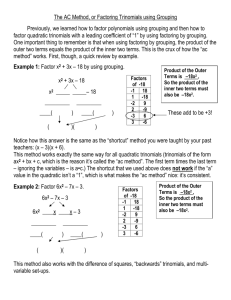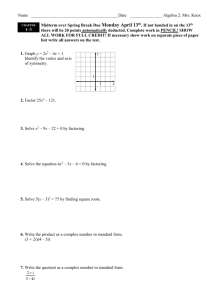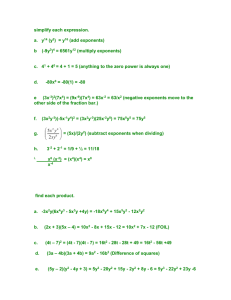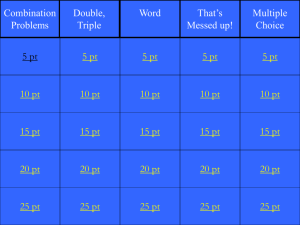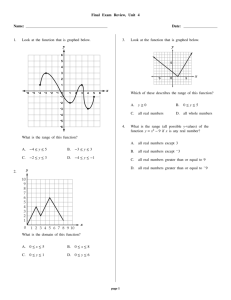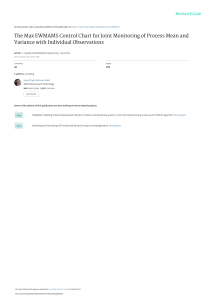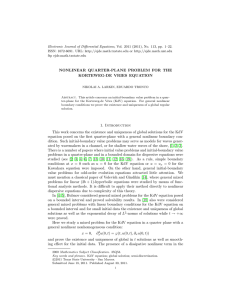MATH1251 Calculus Test 1 2010 S1 v1A
advertisement
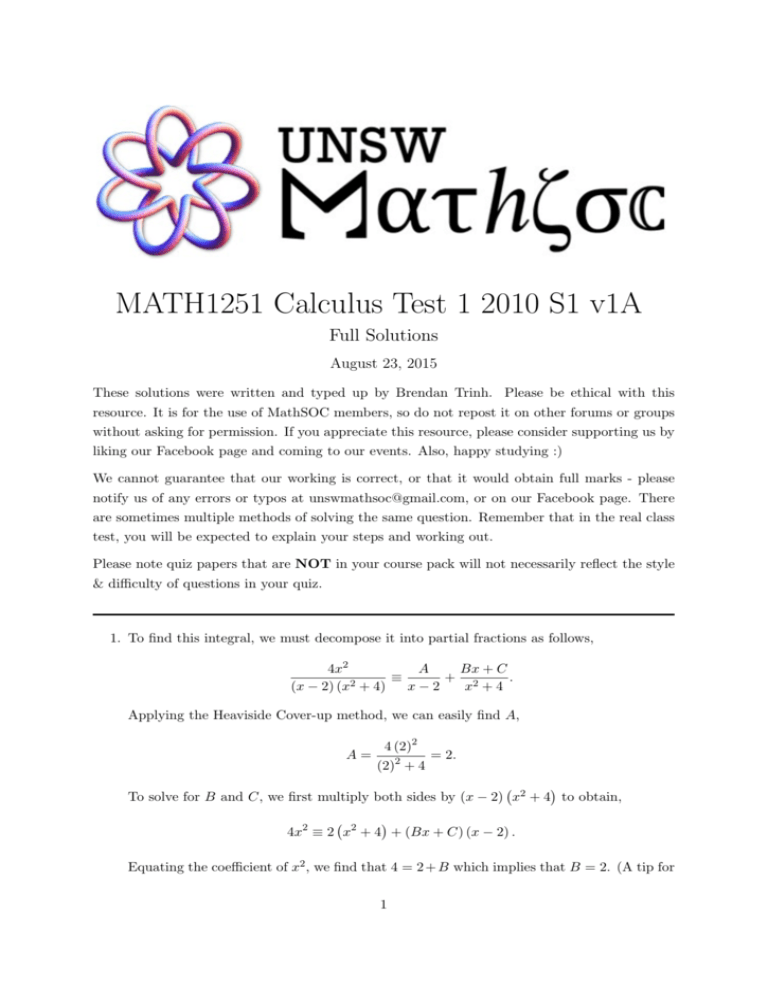
MATH1251 Calculus Test 1 2010 S1 v1A Full Solutions August 23, 2015 These solutions were written and typed up by Brendan Trinh. Please be ethical with this resource. It is for the use of MathSOC members, so do not repost it on other forums or groups without asking for permission. If you appreciate this resource, please consider supporting us by liking our Facebook page and coming to our events. Also, happy studying :) We cannot guarantee that our working is correct, or that it would obtain full marks - please notify us of any errors or typos at unswmathsoc@gmail.com, or on our Facebook page. There are sometimes multiple methods of solving the same question. Remember that in the real class test, you will be expected to explain your steps and working out. Please note quiz papers that are NOT in your course pack will not necessarily reflect the style & difficulty of questions in your quiz. 1. To find this integral, we must decompose it into partial fractions as follows, 4x2 A Bx + C ≡ + 2 . 2 (x − 2) (x + 4) x−2 x +4 Applying the Heaviside Cover-up method, we can easily find A, A= 4 (2)2 = 2. (2)2 + 4 To solve for B and C, we first multiply both sides by (x − 2) x2 + 4 to obtain, 4x2 ≡ 2 x2 + 4 + (Bx + C) (x − 2) . Equating the coefficient of x2 , we find that 4 = 2 + B which implies that B = 2. (A tip for 1 applying this method generally in finding coefficients is to work your way down in terms of powers!). Next, equating the constants, we find that 0 = 8 − 2C and thus C = 4. Our integral now becomes something that can easily be solved, Z Z 4x2 2 2x + 4 dx = + dx (x − 2) (x2 + 4) x − 2 x2 + 4 x = 2 ln |x − 2| + ln x2 + 4 + 2 tan−1 + c. 2 2. To find this recurrence relation, we notice that in the required expression, we have the power of x decrease by one. This implies that we should integrate ekx and differentiate xn when applying integration by parts. 1 Z xn ekx dx In = 0 xn ekx = k 1 Z − 0 1 nxn−1 0 ekx dx k Z n 1 n−1 kx ek x e dx − = k k 0 ek n = − In−1 , k k as required. 3. We notice that the equation is in the form dy + f (x)g(y) = h(x). dx This means that we can solve this differential equation using an Integration Factor, i.e. R I(x) = exp f (x) dx . R So, the integration factor for this particular question is I(x) = exp − x2 dx = x12 . Multiplying this through the equation, we obtain 1 dy 2 − y = 6x2 . x2 dx x3 Applying this method essentially creates a product rule differentiated expression on the left, so reversing this, d y = 6x2 . dx x2 Integrating both sides and simplifying, we obtain our answer, y = 2x3 + c x2 ∴ y = 2x5 + cx2 , 2 where c ∈ R. 4. 9x2 y 2 dx + 6x3 y + 3y 2 dy = 0. First, let u (x, y) = 9x2 y 2 and v (x, y) = 6x3 y + 3y 2 . To show that this differential equation is exact, we must show that Clearly, ∂u ∂y = 18x2 y and ∂v ∂x = 18x2 y, and thus ∂u ∂y = ∂v ∂x ∂u ∂y = ∂v ∂x . implying that the differential equation is exact. To solve this, we let our solution be H (x, y) which must satisfy ∂H ∂x = u and ∂H ∂y = v. Taking the first equation (it doesn’t matter which one), we integrate both sides with respect to x, ∂H = 9x2 y 2 ∂x =⇒ H (x, y) = 3x3 y 2 + c (y) . Note that a term dependent on y pops up because such a term would have been eliminated due to the partial differentiate with respect to x. Now partially differentiating with respect to y, ∂H = 6x3 y + c0 (y) . ∂y Comparing this to what ∂H ∂y should be equal to, as it should be equal to v (x, y), 6x3 y + c0 (y) ≡ 6x3 y + 3y 2 . This implies that c0 (y) = 3y 2 , and hence c (y) = y 3 + c, where c is a constant. Thus, the solution is, H (x, y) = 3x3 y 2 + y 3 + c = 0, which is equivalent to (and the answer is more commonly written as..), 3x3 y 2 + y 3 = c. 3
